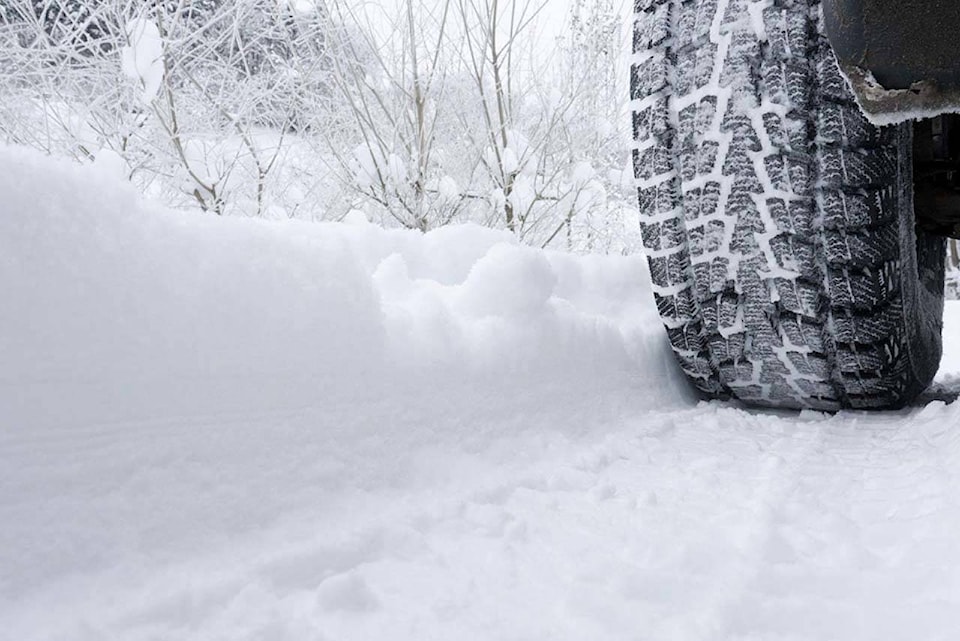New drivers facing their first Shuswap winter have much to consider when hitting the road.
Last week, the Observer sought out seasoned Salmon Arm drivers, asking for advice for novice motorists who will soon be driving in snow for the first time. Feedback included having good winter tires, gearing down on hills (a good idea for those living in the Hillcrest area) and keeping some road de-icer or sand in your vehicle should you get stuck.
Tony Derksen offered very sensible advice: Drive slower, be cautious and give people lots of room. He also recommended being prepared should your vehicle breakdown on the side of the road. To that, ICBC recommends a first aid kit, emergency food and water, spare warm clothing, flares or matches and candles, a shovel and traction mat, sand and battery jumper cables.
Another recommendation was to watch for black ice. With changing temperatures throughout the winter, black ice can and does show up, and sometimes in unexpected places. Studded tires certainly help, but the same cautions noted above still apply. It is unwise to take winter road conditions for granted or assume the actions of other drivers.
Read more: Nearly half of B.C. drivers nervous in winter conditions: BCAA
Read more: B.C. raising highway maintenance standards for winter driving
Moving away from road safety, there are several other hacks available that can help make life easier for drivers in the winter. For example, those wishing to avoid having to scrape frosty windshields in the morning may purchase a windshield cover. Alternatively, before you go to bed, try spraying your windshield, rear and side windows with a mix of white vinegar and water (three parts to one). Squeegee off the excess and leave it. As for fog or frost inside the vehicle, fill a sock with silica-based cat litter and leave it in the vehicle overnight. That should absorb the moisture.
When parking for the night, drivers will often pull their wipers up from the windshield. This way, come morning, they’re not having to deal with wipers frozen to the glass.
Keeping lock de-icer handy somewhere is also not a bad idea.
If you have any other winter driving tips or suggestions, please leave them below.
@SalmonArm
newsroom@saobserver.net
Like us on Facebook and follow us on Twitter
